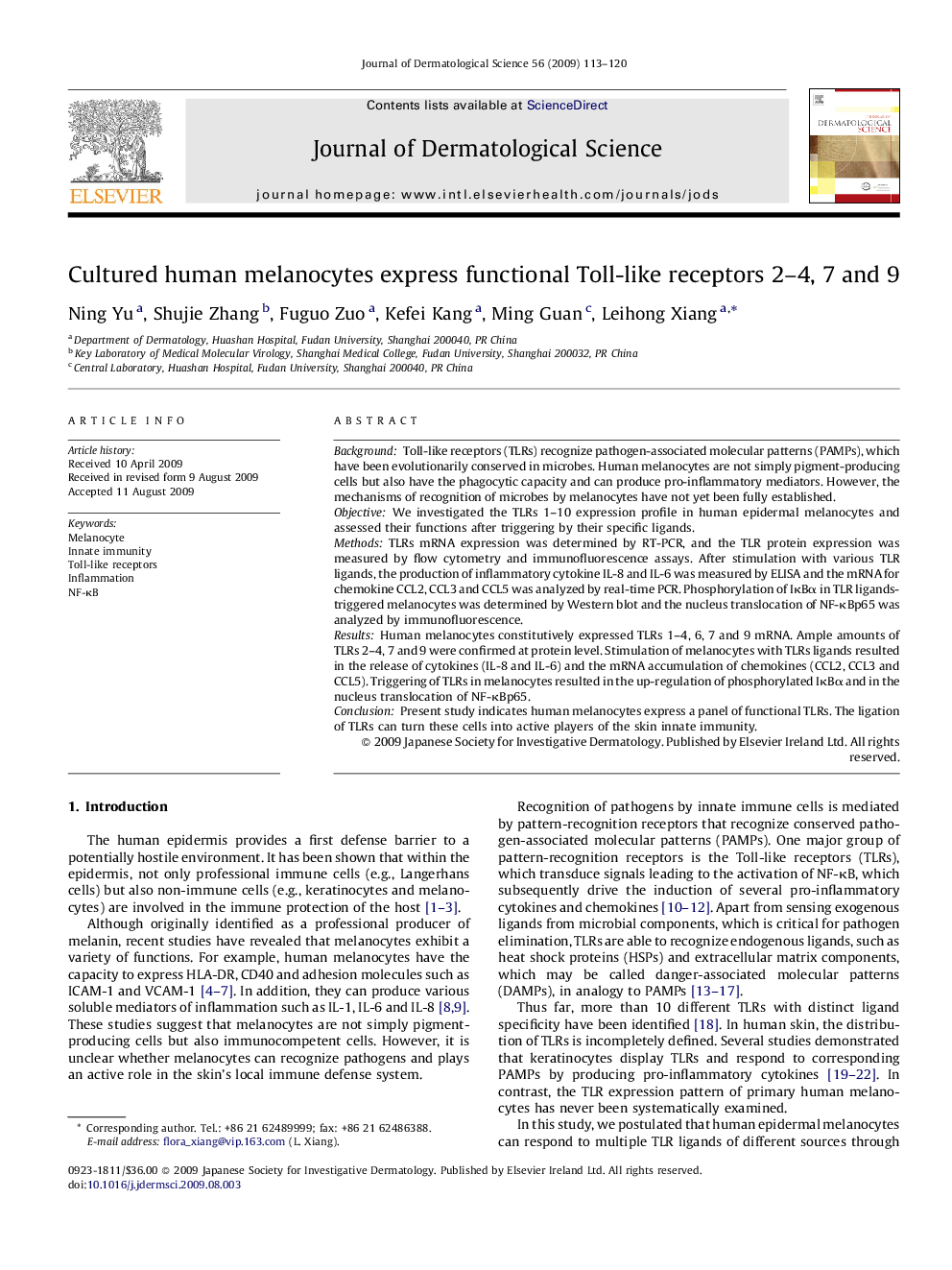| Article ID | Journal | Published Year | Pages | File Type |
|---|---|---|---|---|
| 3213978 | Journal of Dermatological Science | 2009 | 8 Pages |
BackgroundToll-like receptors (TLRs) recognize pathogen-associated molecular patterns (PAMPs), which have been evolutionarily conserved in microbes. Human melanocytes are not simply pigment-producing cells but also have the phagocytic capacity and can produce pro-inflammatory mediators. However, the mechanisms of recognition of microbes by melanocytes have not yet been fully established.ObjectiveWe investigated the TLRs 1–10 expression profile in human epidermal melanocytes and assessed their functions after triggering by their specific ligands.MethodsTLRs mRNA expression was determined by RT-PCR, and the TLR protein expression was measured by flow cytometry and immunofluorescence assays. After stimulation with various TLR ligands, the production of inflammatory cytokine IL-8 and IL-6 was measured by ELISA and the mRNA for chemokine CCL2, CCL3 and CCL5 was analyzed by real-time PCR. Phosphorylation of IκBα in TLR ligands-triggered melanocytes was determined by Western blot and the nucleus translocation of NF-κBp65 was analyzed by immunofluorescence.ResultsHuman melanocytes constitutively expressed TLRs 1–4, 6, 7 and 9 mRNA. Ample amounts of TLRs 2–4, 7 and 9 were confirmed at protein level. Stimulation of melanocytes with TLRs ligands resulted in the release of cytokines (IL-8 and IL-6) and the mRNA accumulation of chemokines (CCL2, CCL3 and CCL5). Triggering of TLRs in melanocytes resulted in the up-regulation of phosphorylated IκBα and in the nucleus translocation of NF-κBp65.ConclusionPresent study indicates human melanocytes express a panel of functional TLRs. The ligation of TLRs can turn these cells into active players of the skin innate immunity.
